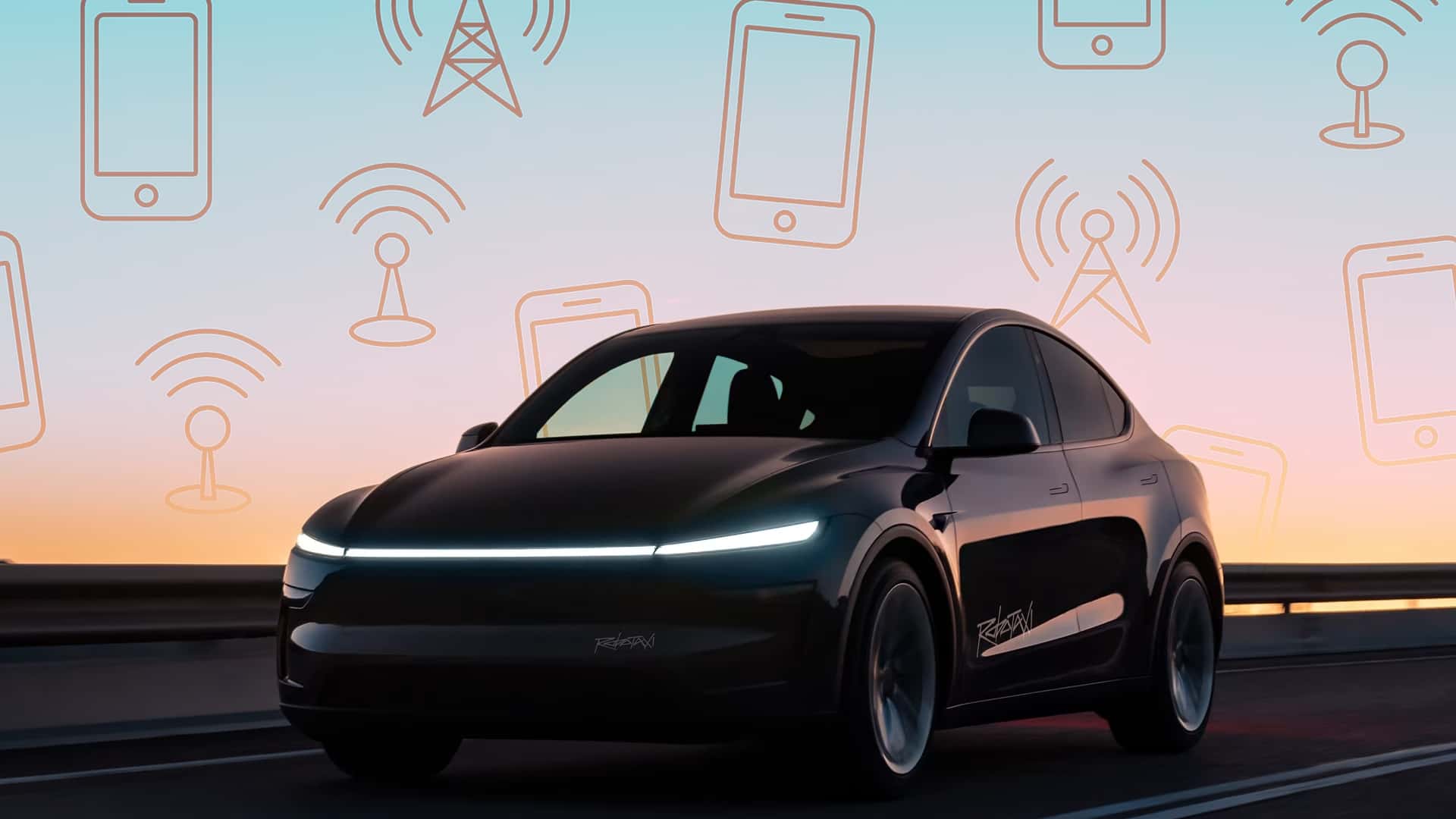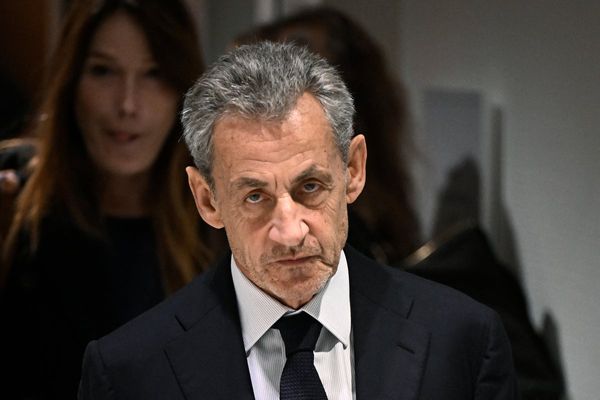
- Tesla wants to know what happens if bad actors use cell jammers against the Robotaxi.
- It applied for a temporary permit to test this with the FCC.
- There's more to just jamming, though—let's take a look at what else Tesla may need to worry about.
Not so long ago, Tesla warned its drivers that its Full Self-Driving software "may do the wrong thing at the worst time." Now the company has fully autonomous (albeit human-supervised) cars buzzing around the streets of Austin in some phallic-shaped loop and even driving to a customer's home for a completely driverless delivery. That doesn't mean that things still can't go wrong.
See, in 2025, we live in a world where cyber risk is everywhere. No digital access point is completely safe, but figuring out where the security holes are is crucial to plugging them.
That's why Tesla is taking its claimed "super paranoid" safety approach to the next level in a targeted test of its Robotaxis, using special wireless jammers.

In a filing with the Federal Communications Commission (FCC), Tesla is asking permission to test how "malicious actors" might interfere with the communication systems that its Robotaxis use.
And, no, this isn't some Hollywood hacker fantasy—this is real-life testing that determines one facet of security that could be exploited by either a sophisticated nation-state actor or just some ordinary guy with a backpack full of radio gear looking to cause havoc.
The FCC's permission slip grants Tesla the ability to test how its cars respond to wireless threats. See, unlike your car's keyfob or home WiFi router, certain wireless tech operates on frequencies that are heavily regulated.
This is because broadcasting on these frequencies can cause interruption to critical infrastructure—think cell phones, GPS, police radios and more. Tesla's filing specifically sought out the ability to test on several wireless frequency bands that are reserved for cellular communication.
Before we dig too deep into what, let's talk about Tesla's why. Here's an excerpt from its filing with the FCC:
We require [a Special Temporary Authority] to perform short term testing of cellular vulnerabilities with our vehicles. With autonomous driving pending we wish to test and simulate RF attacks on the vehicles to understand their resiliency to such attacks by malicious actors. Testing with our equipment is outside Tesla normal operational license area
[We will test] vehicles against cellular interference by malicious actors. We would like to run a network test bed, indoors, at low power (10 watts) in the GSM-700/850/1900/2100/2300 and 3.7ghz (c band) frequency band to validate resiliency with available commercial GSM test equipment. Our goal is to replicate how malicious actors may attempt to jam the communications of a vehicle while in autonomous driving mode.
Tesla says in the filing that it wants to "perform short-term testing of cellular vulnerabilities" in its Robotaxis.
The primary use case here is with jamming, as Tesla calls out in its application. Today, Tesla has a safety operator in the front seat of its Robotaxis to control the vehicle if something doesn't go according to plan. The idea is to eventually ditch that driver and instead rely on a team of teleoperators to remediate problems remotely over a cellular internet connection, similar to what other providers like Waymo do when their cars get stuck and need human intervention. But if an AV's cellular internet is jammed, what will it do when it can't phone home?
That's what Tesla is trying to find out.
The equipment that Tesla is using, a Bird RF GH-60, also has the ability to modify wireless data and replay packets. While Tesla doesn't explicitly call this out as a function of its test, in theory, Tesla could capture instructional data sent to the car and replay it in a different scenario to see how its cars would react. Think what might happen if a bad actor replayed a command from a teleoperator that prompted a vehicle to make a sharp left turn while the car is going down a straight path—this would be a scenario where a replay attack could pose a problem if the proper safeguards aren't put in place.
What Tesla isn't allowed to do is test features outside of the approved spectrum. That means no GPS jamming, and no testing cellular V2X capabilities (which typically operate on the 5.9GHz spectrum).
Also out of scope of this testing, but definitely interesting for a security nerd like me to think about, is how Tesla's Robotaxis could respond to something like a Stingray or Dirtbox.
Stingrays have become public knowledge after defense contractor L3Harris began supplying law enforcement with the devices used to conduct surveillance by intercepting cellular communication between phones and cell towers.
Nation-state actors have utilized similar cell site simulators to even deliver malware to cell phones. When a victim's cell phone connected to the rogue cell station, the threat actor injected a payload and exploited a baseband vulnerability on the phone, resulting in a zero-click installation of NSO Group's Pegasus spyware.
Anyway, back to real life. So, no, Tesla isn't "hacking" its cars in the Mr. Robot sense, but it is running tabletop wargames in the RF sandbox to measure how resilient its cars are to specific types of jamming attacks.
What's wild is just how not wild this is at all. Sure, a government-sponsored bad actor could be the one doing the jamming, but it could also just be any weirdo with a Software-Defined Radio on a street corner or a high-schooler who thought it would be a funny prank to jam up a bunch of Robotaxis in a parking lot. That's the kind of chaos Tesla is looking to avoid.
It just warms my heart to see a company doing a bit of due diligence and performing more than just the basic amount of cyber hygiene. But when you have a 4,200-pound, four-wheeled brick putting around the street with only software behind the steering wheel, Silicon Valley's "move fast and break things" mantra isn't really what you want to hear.







